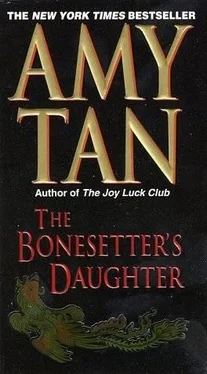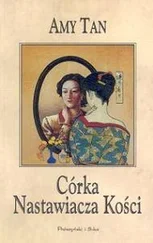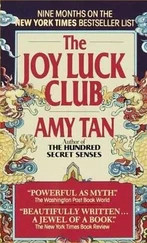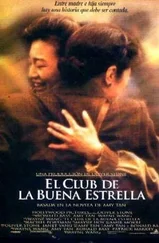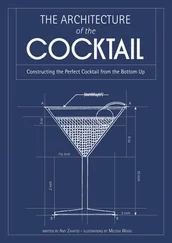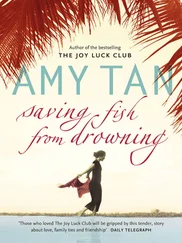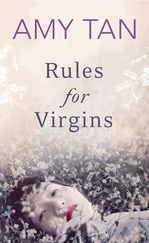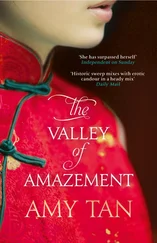"You need to talk to your mom," Francine was now saying in a whiny voice. "She's been accusing me of not paying the rent. I always pay on time, the first of the month. I don't know what she's talking about, but she goes on and on, like a broken record."
Ruth had a sinking feeling. She did not want to hear this.
"I even showed her the canceled check. And she said, 'See, you still have the check!' It was weird, like she wasn't making any sense."
"I'll take care of it," Ruth said quietly.
"It's just that she's harassing me like a hundred times a day. It's making me nuts."
"I'll get it straightened out."
"I hope so, because I was just about to call the police to get a restraining order!"
Restraining order? Who's the nut here? "I'm sorry this happened," Ruth said, and remembered a book she helped write on mirroring a child's feelings. "You must be frustrated when it's clear you've done nothing wrong."
It worked. "Okay, then," Francine said, and backed into her doorway like a cuckoo in a Swiss clock.
Ruth used her own key to let herself into her mother's apartment. She heard LuLing call to her: "Why so late?"
Seated in her brown vinyl easy chair, LuLing looked like a petulant child on a throne. Ruth gave her a once-over to see if she could detect anything wrong, a twitch in her eye, a slight paralysis, perhaps, on one side of her face. Nothing, the same old mom. LuLing was wearing a purple cardigan with gold-tone buttons, her favorite, black slacks, and size-four black pumps with low heels. Her hair was smoothed back and gathered like Fia's and Dory's, only she had the ponytail wound into a netted bun, thickened with a hairpiece. Her hair was jet-black, except for the roots at the back, where she could not see that she had failed to apply enough dye. From a distance, she looked like a much younger woman, sixty instead of seventy-seven. Her skin was even-toned and smooth, no need for foundation or powder. You had to stand a foot away before you could see the fine etching of wrinkles on her cheeks. The deepest lines were at the corners of her mouth, which were often turned down, as they were now.
LuLing groused. "You say doctor visit one o'clock."
"I said the appointment was at four."
"No! One o'clock! You say be ready. So I get ready, you don't come!"
Ruth could feel the blood draining out of her head. She tried another tack. "Well, let me call the doctor and see if we can still get in at four." She went to the back, where her mother did her calligraphy and painting, to the room that had been her own long before. On her mother's drawing table lay a large sheet of watercolor paper. Her mother had started a poem-painting, then stopped in mid-character. The brush lay on the paper, its tip dried and stiff. LuLing was not careless. She treated her brushes with fanatical routine, washing them in spring water, not tap, so that chlorine would not damage them. Perhaps she had been in the middle of painting and heard the teakettle crying and bolted. Maybe the phone rang after that, one thing after another. But then Ruth looked closer. Her mother had tried to write the same character over and over again, each time stopping at the same stroke. What character? And why had she stopped in mid-flight?
When Ruth was growing up, her mother supplemented her income as a teacher's aide with side businesses, one of which was bilingual calligraphy, Chinese and English. She produced price signs for supermarkets and jewelry stores in Oakland and San Francisco, good-luck couplets for restaurant openings, banners for funeral wreaths, and announcements for births and weddings. Over the years, people had told Ruth that her mother's calligraphy was at an artist's level, first-rate classical. This was the piecework that earned her a reliable reputation, and Ruth had had a role in that success: she checked the spelling of the English words.
"It's 'grapefruit,'" eight-year-old Ruth once said, exasperated, "not 'grapefoot.' It's a fruit not a foot."
That night, LuLing started teaching her the mechanics of writing Chinese. Ruth knew this was punishment for what she had said earlier.
"Watch," LuLing ordered her in Chinese. She ground an inkstick onto an inkstone and used a medicine dropper to add salt water in doses the size of tears. "Watch," she said, and selected a brush from the dozens hanging with their tips down. Ruth's sleepy eyes tried to follow her mother's hand as she swabbed the brush with ink, then held it nearly perpendicular to the page, her wrist and elbow in midair. Finally she began, flicking her wrist slightly so that her hand waved and dipped like a moth over the gleam of white paper. Soon the spidery images formed: "Half Off!" "Amazing Discounts!" "Going Out of Business!"
"Writing Chinese characters," her mother told her, "is entirely different from writing English words. You think differently. You feel differently." And it was true: LuLing was different when she was writing and painting. She was calm, organized, and decisive.
"Bao Bomu taught me how to write," LuLing said one evening. "She taught me how to think. When you write, she said, you must gather the free-flowing of your heart." To demonstrate, LuLing wrote the character for "heart." "See? Each stroke has its own rhythm, its balance, its proper place. Bao Bomu said everything in life should be the same way."
"Who's Bao Bomu again?" Ruth asked.
"She took care of me when I was a girl. She loved me very much, just like a mother. Bao, well, this means 'precious,' and together with bomu , this means 'Precious Auntie.'" Oh, that Bao Bomu, the crazy ghost. LuLing started to write a simple horizontal line. But the movements were not simple. She rested the tip of the brush on the paper, so it was like a dancer sur les pointes. The tip bent slightly downward, curtsied, and then, as if blown by capricious winds, swept to the right, paused, turned a half-step to the left and rose. Ruth blew out a sigh. Why even try? Her mother would just get upset that she could not do it right.
Some nights LuLing found ways to help Ruth remember the characters. "Each radical comes from an old picture from a long time ago." She made a horizontal stroke and asked Ruth if she could see what the picture was. Ruth squinted and shook her head. LuLing made the identical stroke. Then again and again, asking each time if Ruth knew what it was. Finally, her mother let out a snort, the compressed form of her disappointment and disgust.
"This line is like a beam of light. Look, can you see it or not?"
To Ruth, the line looked like a sparerib picked clean of meat.
LuLing went on: "Each character is a thought, a feeling, meanings, history, all mixed into one." She drew more lines-dots and dashes, downstrokes and upstrokes, bends and hooks. "Do you see this?" she said over and over, tink-tink-tink. "This line, and this and this-the shape of a heavenly temple." And when Ruth shrugged in response, LuLing added, "In the old style of temples," as if this word old would bump the Chinese gears of her daughter's mind into action. Ping-ping! Oh, I see.
Later LuLing had Ruth try her hand at the same character, the whole time stuffing Chinese logic into her resistant brain. "Hold your wrist this way, firm but still loose, like a young willow branch-ai-ya, not collapsed like a beggar lying on the road… Draw the stroke with grace, like a bird landing on a branch, not an executioner chopping off a devil's head. The way you drew it-well, look, the whole thing is falling down. Do it like this… light first, then temple. See? Together, it means 'news from the gods.' See how this knowledge always comes from above? See how Chinese words make sense?"
With Chinese words, her mother did make sense, Ruth now reasoned to herself. Or did she?
Читать дальше
